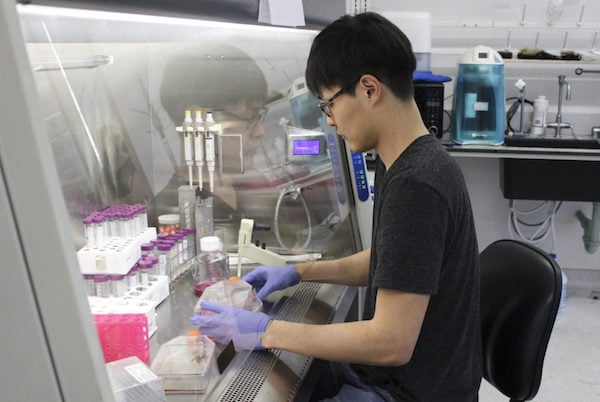
[Image above] Credit: Bridie O’Connell, The GW Hatchett
Lately, the medical industry has seen many advances in its field with 3-D printing technology.
Take orthopedics for example. Orthopedic surgeons are using 3-D printers to make replicas of patients’ broken bones to better visualize injuries.
Other researchers are using 3-D printers to make bone scaffolds.
And a company in Florida is creating entire synthetic cadavers in a “cadaver factory” using 3-D technology to make human body prototypes.
Medical scientists are also working on a way to create 3-D printed organs to help patients who are waiting for organ transplants.
Three years ago, the medical community discussed the challenges of creating biomaterials with a 3-D printer, including quality, complicated cell structures of organs, and a probable decade-long FDA approval process.
Now, researchers at George Washington University’s School of Engineering and Applied Science are working with 3-D printers to create artificial tissues to replace injured or damaged human tissues.
In an article on the GW Hatchet website, graduate researcher Wei Zhu says the research team is developing tissue substitutes for bone, cartilage, and neural tissue.
Although the team usually prints with a synthetic polymer material, the ultimate goal is to develop tissues made from biodegradable materials that can work as temporary structures to support neural or other types of tissues while an injured organ heals.
“[It] will disappear in the human body with the formation of new tissue,” Zhu says in the article. “The new tissue will be your own cells.”
In a new study, the team showed that a 3-D-printed scaffold can help support growth of stem cells in damaged tissues. Stimulating the cells with low-level laser light therapy helps promote their growth in vitro, offering potential for future therapeutic strategies.
The implications of this research are far-reaching. Doctors could repair damaged nerve or bone tissues in patients with diseases such as arthritis and lupus, eventually paving the way for successful organ transplants in the future.
The paper, published in Biofabrication, is “3D printing scaffold coupled with low level light therapy for neural tissue regeneration” (DOI: 10.1088/1758-5090/aa6999).
Author
Faye Oney
CTT Categories
- Biomaterials & Medical
- Material Innovations


